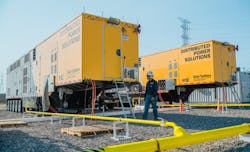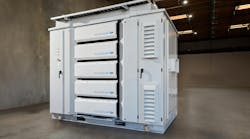The period between project initiation and utility grid connection, known as the utility gap, poses significant challenges, especially for data centers reliant on continuous power. Factors such as delays in permits, infrastructure shortcomings, or remote locations without grid access contribute to this gap. Temporary power solutions become vital during such periods, ensuring uninterrupted operations.
Several factors contribute to the vulnerability of utility grids, including capacity issues, lack of planning, increased demand, weather-related disruptions, supply chain challenges, and renewable energy intermittency. Understanding each of these factors helps businesses strategize for operational continuity during disruptions.
Capacity issues arise when electricity demand exceeds supply, causing outages and reliability problems. Lack of planning leads to underinvestment in upgrades, aging infrastructure, and higher costs for consumers. Increasing demand, worsened by factors like population growth and COVID-19, strains the grid, causing more outages. Extreme weather and supply chain issues also impact reliability, while renewable energy's intermittency adds further challenges for grid operators.
Utility connection delays, ranging from months to years, are increasingly common, impacting data center projects with significant power requirements. Delays result in financial losses, extended project timelines, higher interest expenses, missed business opportunities, and additional regulatory costs.
Reliable power is indispensable for data centers, ensuring seamless operations, productivity, safety, and equipment functionality. Beyond business continuity, reliable power supports workforce well-being and critical equipment maintenance.
Temporary power solutions offer flexibility, quick deployment, reliability, cost efficiency, grid independence, and a smooth transition to permanent infrastructure. Temporary power sources, such as turbine and reciprocating generators, provide fuel efficiency, quick mobilization, and uninterrupted, reliable power.
- Reciprocating engine generators deliver high-power output and are easily transported to locations. Today, natural gas fuel is widely available through compressed natural gas (CNG) or liquefied natural gas (LNG), which translates to more fuel-efficient solutions, reducing operational costs. With their high reliability and safety features, these generators provide uninterrupted power efficiently.
- Gas Turbines provide a reliable and efficient power source, particularly for large-scale applications and industrial settings. Gas turbines can deliver high power output and have excellent load-following capabilities, allowing them to respond quickly to changing power demands. They are easy to transport and install with a compact size and modular design. They're also highly efficient, offering fuel efficiency and lower emissions than other power generation technologies.
Choosing the right temporary power solutions partner is critical for a successful project. Selecting a partner with the right expertise, reliable and compliant equipment, and industry knowledge and experience is essential. The ideal company will have a proven track record in understanding data center operation requirements, delivering engineered solutions, and deploying reliable customer equipment and product support.
Steps to initiate a successful partnership involve assessing power needs, financial feasibility, regulatory compliance, engineered solutions, and execution strategies. Partnering with an experienced provider like Distributed Power Solutions (DPS) ensures tailored solutions and reliable support throughout the project lifecycle.
During Hurricane Laura, DPS responded swiftly to provide emergency power to our customer, Energy Transfer, overcoming grid instability and restoring operations within six days. Our experience and preparedness highlight the critical role of temporary power solutions in disaster recovery and business continuity.
Bridging the utility gap for data centers requires innovative solutions and partnering with temporary power rental solutions companies. Finding a power partner that specializes in providing flexible, reliable, and scalable temporary power solutions tailored to specific project needs is essential. Organizations can benefit from quick deployment, cost efficiency, and seamless integration with existing infrastructure by partnering with them, ensuring uninterrupted operations.
Companies setting up temporary power for their projects should carefully assess power requirements, engage with reputable rental solution providers, and communicate project specifications effectively. By following these recommendations, companies can successfully deploy temporary power solutions, overcome challenges, and achieve their project goals efficiently.
About the Author

David Velosa
David Velosa, Director of Commercial Operations at Distributed Power Solutions (DPS Energy), leverages over 15 years of expertise in the mobile power generation market to deliver reliable, cost-efficient solutions globally, with a keen understanding of the financial impacts of power shortfalls.
Distributed Power Solutions (DPS) specializes in providing low carbon, reliable temporary power and turnkey solutions across North America, offering quick deployment and a team of seasoned professionals possessing extensive knowledge and experience. For more information, visit www.dpsenergy.com.



